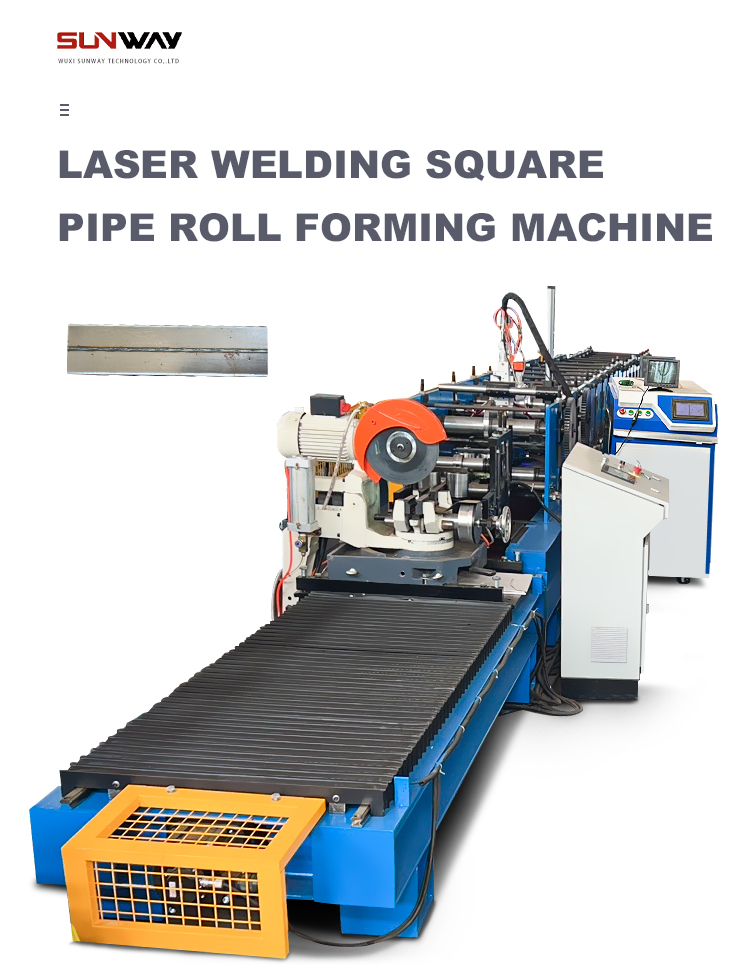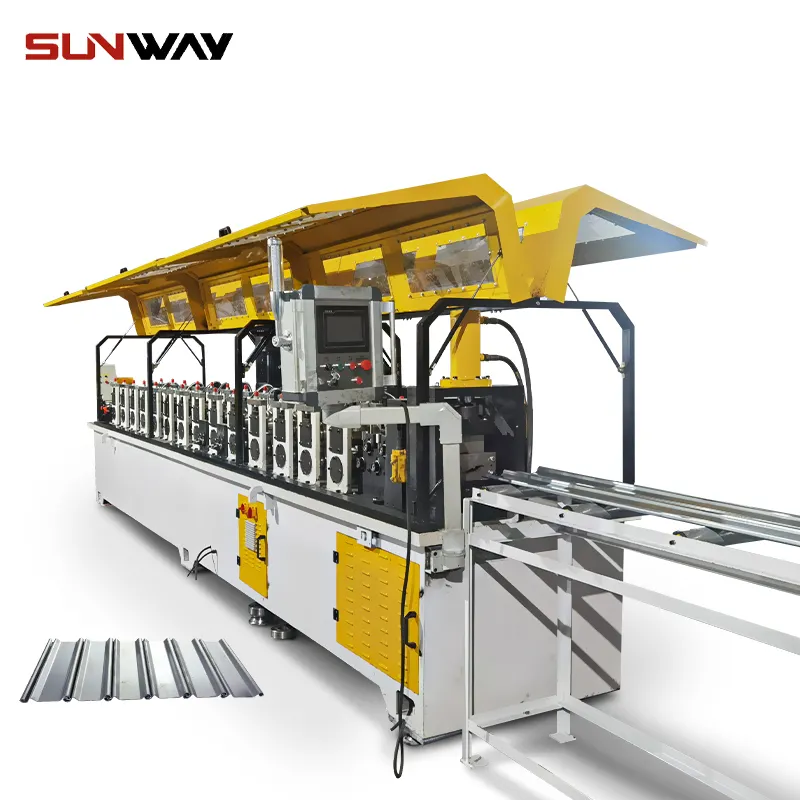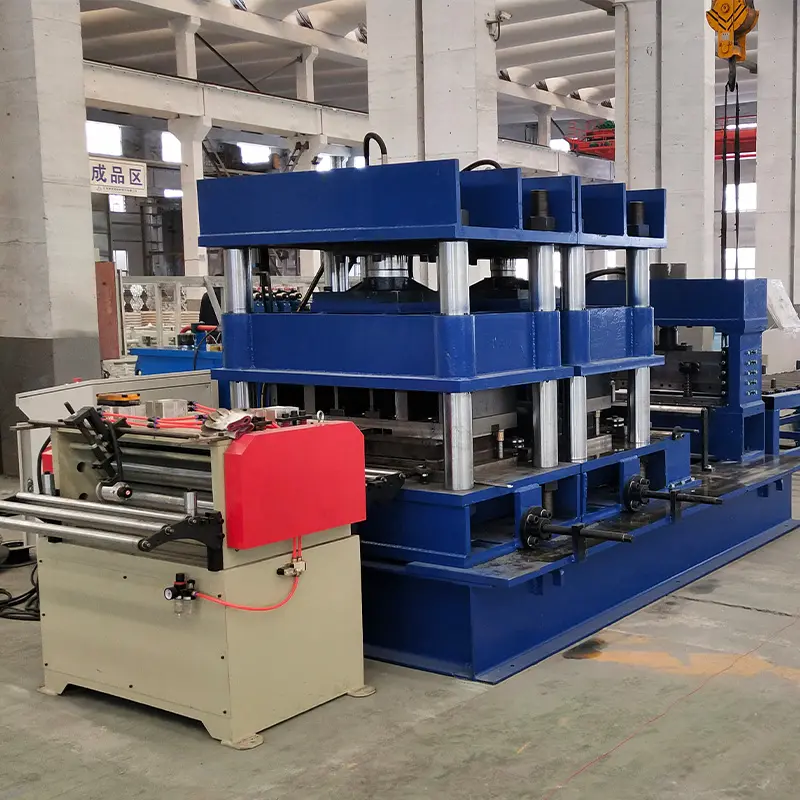Overview
Light gauge roll forming machines are essential in the manufacturing industry, primarily used for forming light gauge metals into various profiles with precision and efficiency. These machines are highly versatile, catering to different applications such as construction, automotive, and aerospace industries. In this comprehensive guide, we’ll delve into the intricacies of light gauge roll forming machines, their types, components, working process, and much more. By the end, you’ll have a thorough understanding of these machines, enabling you to make informed decisions whether you’re a buyer, supplier, or just a curious enthusiast.
What is a Light Gauge Roll Forming Machine?
A light gauge roll forming machine is specialized equipment designed to shape light gauge metals (usually thinner than 2mm) into desired profiles. The process involves feeding a continuous strip of metal into the machine, where it passes through a series of rollers that gradually shape it into the final profile. The result is precise, consistent, and high-quality metal components that can be used in a variety of applications.

Types of Light Gauge Roll Forming Machines
Different types of light gauge roll forming machines cater to various needs, and understanding these can help you choose the right one for your requirements. Here’s a detailed table describing the precision roll forming machine types:
| Machine Type | Description |
|---|---|
| Single-Sided Roll Forming Machine | Ideal for producing symmetrical profiles, it uses one set of rollers for shaping. |
| Double-Sided Roll Forming Machine | Equipped with two sets of rollers, this machine can form complex profiles with multiple bends and shapes. |
| C-Purlin Roll Forming Machine | Specifically designed for forming C-shaped profiles used in construction. |
| Z-Purlin Roll Forming Machine | Tailored for Z-shaped profiles, commonly used in structural applications. |
| U-Channel Roll Forming Machine | Forms U-shaped channels, widely used in various industries for framing and support. |
| Roof Panel Roll Forming Machine | Specialized in creating roof panels with precision and consistency. |
| Door Frame Roll Forming Machine | Perfect for producing door frames, ensuring uniformity and strength. |
| Metal Stud Roll Forming Machine | Produces metal studs used in drywall construction. |
| Shelf Panel Roll Forming Machine | Designed to create shelving panels, offering flexibility in design. |
| High-Speed Roll Forming Machine | Capable of high-speed production while maintaining precision, ideal for large-scale manufacturing. |
Working Process of High-Speed Roll Forming Machine
The working process of a high-speed roll forming machine involves several steps, each crucial for achieving the desired profile with high precision and efficiency. Here’s a detailed explanation of the process:
- Material Feeding: The process begins with feeding a continuous strip of light gauge metal into the machine. The material is typically unwound from a coil and directed into the machine.
- Roller Stations: The metal strip passes through multiple roller stations, each designed to perform a specific function in shaping the metal. The rollers gradually bend and form the metal into the desired profile.
- Cutting: Once the metal strip has been formed into the required profile, it is cut to the specified length. High-speed roll forming machines often use a flying cutoff mechanism that cuts the metal without stopping the production line.
- Quality Control: Throughout the process, various quality control measures are in place to ensure the final product meets the required specifications. This includes checking the dimensions, thickness, and overall quality of the formed metal.
- Final Product: The finished product is then collected and prepared for packaging and shipping.
Key Components and Their Functions
Here’s a table detailing the key components of a light gauge roll forming machine and their functions:
| Component | Function |
|---|---|
| Uncoiler | Holds and unwinds the metal coil, feeding it into the machine. |
| Roller Stations | Gradually shape the metal strip into the desired profile through a series of rollers. |
| Cutoff System | Cuts the formed metal strip to the specified length without stopping the production line. |
| नियंत्रण प्रणाली | Manages the operation of the machine, including speed, roller adjustments, and quality control. |
| Drive System | Powers the rollers and other moving parts of the machine, ensuring smooth operation. |
| Guiding System | Ensures the metal strip is properly aligned as it moves through the machine. |
| Hydraulic System | Provides the necessary force for cutting and other operations. |
| Cooling System | Prevents overheating of the machine components, ensuring consistent performance. |

Machine Speed and Efficiency
Understanding the speed and efficiency of light gauge roll forming machines is crucial for optimizing production. Here’s a table summarizing these aspects:
| Machine Type | Speed (m/min) | Efficiency (%) |
|---|---|---|
| Single-Sided Roll Forming | 10-15 | 85-90 |
| Double-Sided Roll Forming | 8-12 | 80-85 |
| C-Purlin Roll Forming | 12-20 | 90-95 |
| Z-Purlin Roll Forming | 12-18 | 88-92 |
| U-Channel Roll Forming | 15-25 | 92-96 |
| Roof Panel Roll Forming | 10-20 | 85-90 |
| Door Frame Roll Forming | 8-15 | 80-85 |
| Metal Stud Roll Forming | 15-30 | 90-95 |
| Shelf Panel Roll Forming | 10-20 | 85-90 |
| High-Speed Roll Forming | 20-40 | 95-98 |
Customized Mechanical Parameters
Customizing mechanical parameters can enhance the performance and suitability of light gauge roll forming machines for specific applications. Here’s a table presenting some customizable parameters:
| Parameter | Description |
|---|---|
| Material Thickness | Adjustments can be made to accommodate different material thicknesses. |
| Profile Dimensions | Customizable to produce specific profile dimensions. |
| Roller Configuration | Rollers can be configured for different shapes and profiles. |
| Cutoff Length | The length of the cut metal can be customized according to requirements. |
| Speed Control | Speed adjustments to match production requirements. |
| Automation Level | Degree of automation can be tailored, from semi-automatic to fully automatic systems. |
| बिजली की आपूर्ति | Machines can be adapted to different power supply specifications (e.g., voltage, frequency). |
| Cooling System Specifications | Customizable to match the cooling needs of the production process. |
| Control Interface | User interfaces can be customized for ease of operation. |
Applications and Uses
Light gauge roll forming machines are versatile and used in various industries. Here’s a table highlighting some of the common applications:
| आवेदन | Industry |
|---|---|
| Roof Panels | Construction |
| Wall Panels | Construction |
| Door Frames | Construction |
| Window Frames | Construction |
| Metal Studs | Construction (Drywall Framing) |
| C-Purlins and Z-Purlins | Structural Applications in Construction |
| U-Channels | General Framing and Support in Various Industries |
| Shelving Panels | Storage and Racking Systems in Warehousing and Retail |
| Automotive Components | Automotive Industry |
| Aerospace Components | Aerospace Industry |
Installation, Operation, and Maintenance
Proper installation, operation, and maintenance are crucial for the optimal performance of light gauge roll forming machines. Here’s a table outlining these aspects:
| Aspect | विवरण |
|---|---|
| Installation | Ensure proper alignment, secure mounting, and adequate space for operation and maintenance. |
| Operation | Follow manufacturer guidelines, ensure proper material feeding, and monitor the production process. |
| Maintenance | Regular inspections, lubrication of moving parts, checking and replacing worn-out components. |
| Safety Measures | Implement safety protocols, train operators, and ensure protective equipment is used. |
Suppliers and Price Range Details
Choosing the right supplier is essential for acquiring quality light gauge roll forming machines. Here’s a table with details on suppliers and price ranges:
| Supplier | Location | Price Range (USD) |
|---|---|---|
| सैमको मशीनरी | Canada | $50,000 – $150,000 |
| Bradbury Group | USA | $60,000 – $200,000 |
| Zhongyuan Machinery | China | $30,000 – $100,000 |
| GASPARINI SpA | इटली | $70,000 – $180,000 |
| Formtek, Inc. | USA | $50,000 – $150,000 |
| Hangzhou Roll Forming | China | $40,000 – $120,000 |
| Metform International | Canada | $60,000 – $200,000 |
| Yingkou Bohai Machinery | China | $35,000 – $110,000 |
| Tishken | USA | $50,000 – $160,000 |
| Brother Union Machinery | China | $30,000 – $100,000 |
How to Choose the Right Supplier
Choosing the right supplier involves considering several factors to ensure you get a reliable and efficient machine. Here’s a table detailing how to choose the right supplier:
| Factor | विवरण |
|---|---|
| Reputation | Look for suppliers with a good reputation in the industry, backed by positive reviews and testimonials. |
| अनुभव | Consider the supplier’s experience in manufacturing and supplying roll forming machines. |
| Customization Options | Ensure the supplier offers customization options to meet your specific needs. |
| Technical Support | Check if the supplier provides technical support and after-sales services. |
| गुणवत्ता आश्वासन | Look for suppliers who adhere to strict quality assurance standards. |
| Price vs. Quality | Balance the cost with the quality of the machine to ensure you get value for your investment. |
| Lead Time | Consider the supplier’s lead time and delivery schedules. |
| Warranty | Ensure the supplier offers a comprehensive warranty on their machines. |
Pros and Cons: Light Gauge Roll Forming Machines
Understanding the advantages and limitations of light gauge roll forming machines is crucial for making an informed decision. Here’s a comparative table:
| Aspect | Pros | Cons |
|---|---|---|
| Precision | High precision in forming profiles. | Requires skilled operators for setup and adjustments. |
| Efficiency | High production efficiency and speed. | Initial setup can be time-consuming. |
| Versatility | Can produce a wide range of profiles. | Limited to light gauge metals. |
| Cost-Effectiveness | Cost-effective for large-scale production. | High initial investment. |
| Quality | Consistent quality of finished products. | Maintenance can be complex and requires regular attention. |
| Automation | Available in semi-automatic and fully automatic models. | Fully automated models can be expensive. |

सामान्य प्रश्न
| Question | Answer |
|---|---|
| What materials can be used in light gauge roll forming machines? | Common materials include steel, aluminum, and other light gauge metals. |
| How long does it take to set up a roll forming machine? | Setup time can vary, typically ranging from a few hours to a couple of days, depending on the complexity. |
| Can these machines be customized? | Yes, many suppliers offer customization options to meet specific production needs. |
| What is the typical lifespan of a roll forming machine? | With proper maintenance, these machines can last for several years, often exceeding 10-15 years. |
| Do roll forming machines require skilled operators? | Yes, skilled operators are necessary for setup, operation, and maintenance to ensure optimal performance. |
| Are there safety measures in place for operating these machines? | Yes, it’s essential to follow safety protocols and use protective equipment during operation. |
| What is the typical production speed of these machines? | Production speed can vary, with high-speed machines reaching up to 40 meters per minute. |
निष्कर्ष
Light gauge roll forming machines are a cornerstone of modern manufacturing, providing efficient and precise solutions for forming light gauge metals into various profiles. Whether you’re looking to produce construction materials, automotive components, or aerospace parts, understanding the types, components, and operational aspects of these machines is crucial. By choosing the right supplier and customizing the machine to your needs, you can optimize your production processes and achieve high-quality results consistently.
With this comprehensive guide, you’re now equipped with the knowledge to navigate the world of light gauge roll forming machines. Whether you’re making a purchase decision or simply exploring the technology, this information will serve as a valuable resource.
